© ROOT-NATION.com - Use of content is permitted with a backlink.
Aspide is an Italian missile system developed on the basis of the American medium-range air-to-air missile AIM-7E Sparrow. Today everything about this SAM.
A few days ago, it became known that in Zaragoza (Spain), the Ukrainian military are undergoing training on the use of the Aspide surface-to-air missile system. This was reported by the Ministry of Defense of Spain after the training was visited by Defense Minister Margarita Robles.
It is known that 19 Ukrainian servicemen arrived for training in the framework of the commitment of the Ministry of Defense of Spain to provide defense support to Ukraine. This means that this anti-aircraft missile system should soon appear in Ukraine.
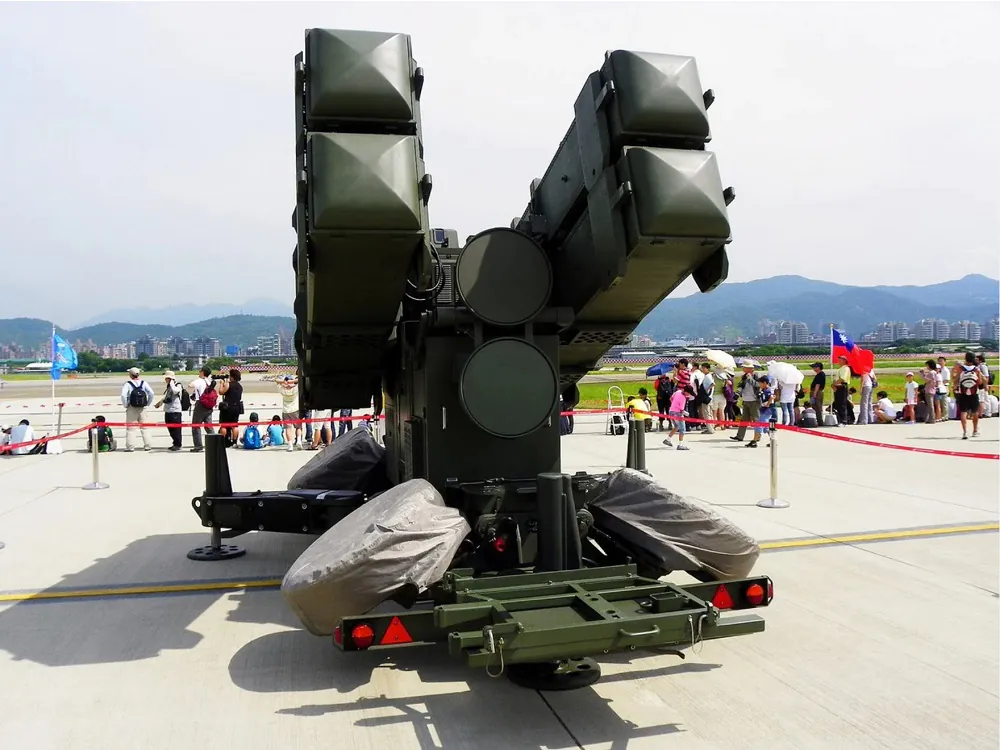
The Spada Aspide surface-to-air missile system (SAM), also known as Skyguard Aspide, is respected by the Italian and Spanish militaries. Its appearance was the result of the creation of one of the modifications of the Aspide missile for use on ground platforms. The Italian company Selenia has been producing this anti-aircraft missile system since 1977. Throughout its existence, the SAM has undergone several stages of modification and improvement. So let’s talk in more detail about each modification separately.
Read also: ‘Neptunes’ knocked out ‘Moskva’ cruiser: All about these anti-ship cruise missiles
Aspide Mk1/Mk2 missiles
The Italian Aspide missile is a licensed version of the American Sparrow, used as an air-to-air and surface-to-air missile. In later versions, it was possible to launch from both ground platforms and ships. Let us remind that the AIM-7E Sparrow missile entered service in 1962 and was widely used as a standard for other variants, such as Sky Flash (UK) and Aspide (Italy).
There is also the Chinese PL-11 medium-range air defense system, which is also based on the Aspide missile. The missile was acquired by China in the late 1980s for use as an air-to-air missile and, as with the US and Italian versions, was subsequently modified in the LY-60 system for use in both ground and sea-based air defence. In response to the Tiananmen Square massacre, the European Council imposed a series of sanctions in June 1989, including an arms embargo on China. Deliveries of Italian Aspide air-to-air missiles appear to have been made under agreements prior to the embargo.
Through Alenia Difesa, Finmeccanica offers a full range of systems, including surface-to-air systems based on the Aspide missile (Spada, Skyguard, Albatros, ARAMIS).
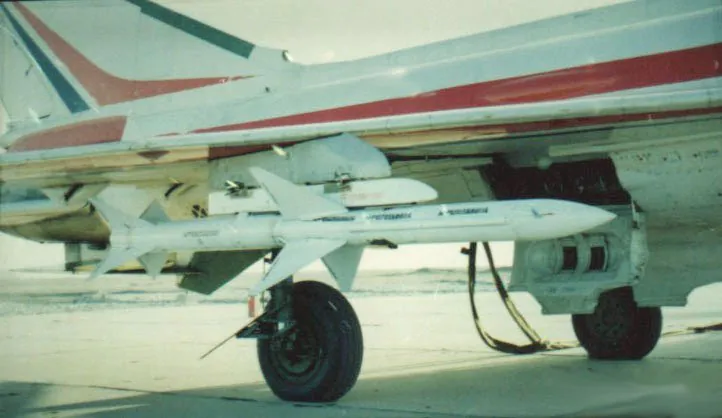
Let’s move directly to the missile system itself. Selenia had previously built the AIM-7E Sparrow air-to-air missile under license from Raytheon, and also developed the onboard launch and guidance system installed on the F-104S. But later, in 1977, the Sparrow missile was replaced by its own development – Aspide 1A from Selenia. Although similar in appearance to and derived from the Sparrow, the Aspide is an all-Italian version that has original electronics and warhead, as well as a new more powerful engine. With a range and speed greater than that of the AIM-7E, the missile’s capabilities are rather closer to Raytheon’s AIM-7F. The front airframe and fairing have been redesigned to operate more efficiently at hypersonic speeds, and the guidance unit is completely new – it is smaller and lighter than the AIM-7E, has better resistance to ECM (electronic countermeasures) and has a new fuze system.
The Aspide missile is a multipurpose supersonic (Mach 2.0) point defense missile powered by a single-stage solid rocket engine. Four movable wings are positioned at 45 degrees from the centerline and run along the fuselage of the missile for roll stabilization and rudder control, while the other four fixed wings are in line with the surfaces, thus providing aerodynamic lift and stability. The type of guidance is semi-active guidance with proportional navigation. The target is illuminated by continuous energy generated by the system illuminator. The Aspide missile homing head receives the echo from the target in the front receiver and the direct signal from the illuminator in the rear receiver.
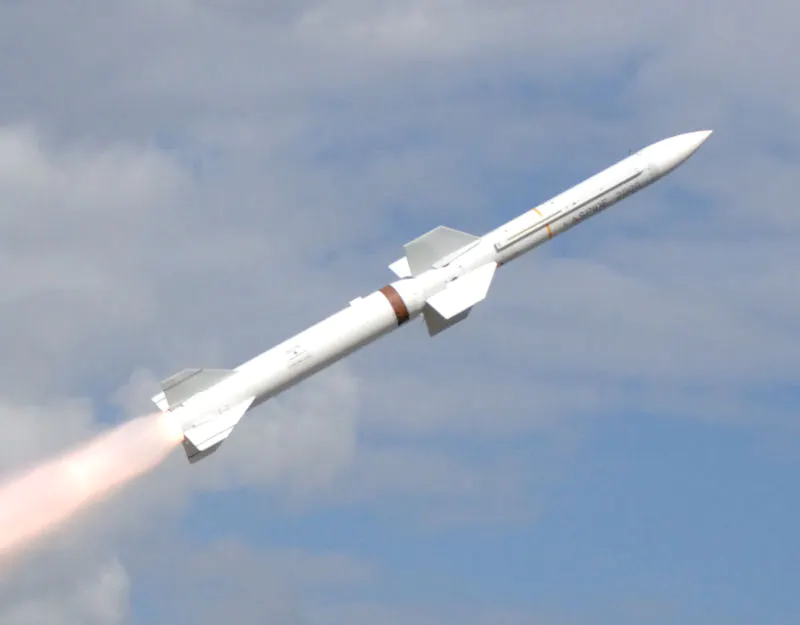
Aspide is compatible with existing Sparrow equipment, but has a greater surface-to-air range, improved ECM resistance and better low-level capabilities, including the ability to rapidly descend when used as an air-to-air missile. Unlike the Sparrow, the Aspide has been optimized for both surface-to-air and air-to-air missions. In addition, the price is the same or slightly lower than the AIM-7F, i.e. about $100,000.
Albatros ship-based air defense system
The Aspide missile also replaces the US Sparrow missile in the ship’s SAM Albatros system, which Selenia positions as designed for self-defense and mutual defense, i.e. used for both point defense and area defense. The system is available with three launcher versions to meet the ship’s equipment requirements. Two versions of the missile can be supplied with the system: the standard ASPIDE for point defense and ASPIDE 2000 for the protection of local area or escort ships. A continuous wave transmitter provides the radio frequency power required to guide the missile, which is radiated through the fire control system’s tracker antenna.
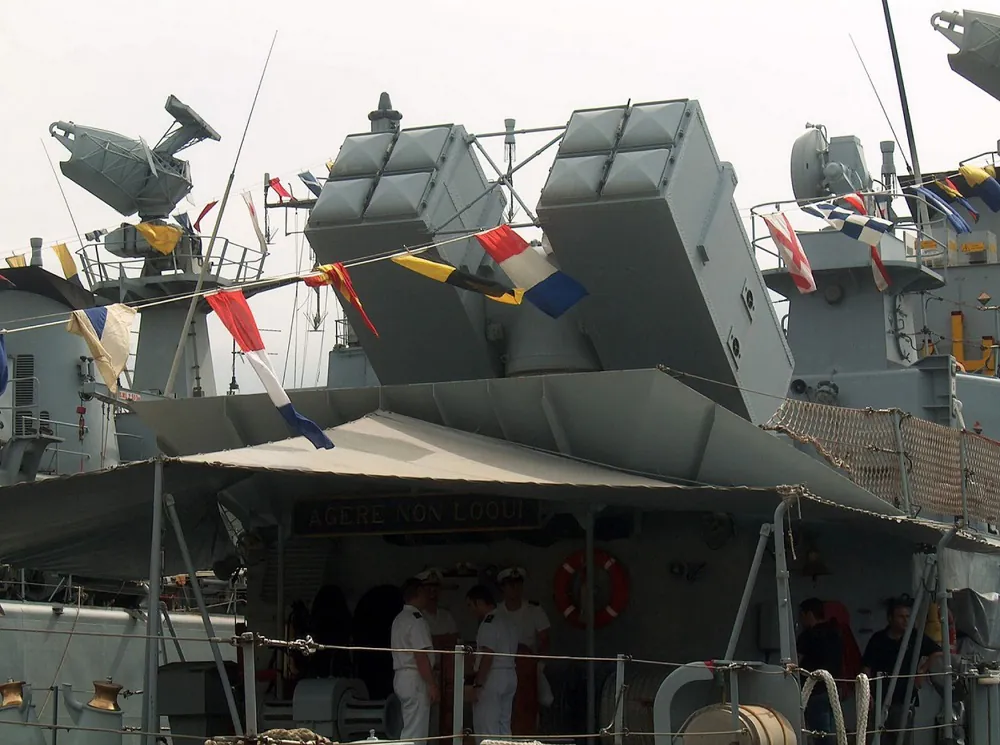
The Albatros uses Selenia RTN10XM Orion pulse Doppler radars and RTN-12X Sirio continuous wave radars to track and illuminate targets. Interestingly, these radars work together. The RTN-10XM is the first Orion model to have frequency rate rather than frequency spacing, and the RTN-12X with its moving target indication acts as a low-level gap filler. These capabilities are important for Italian Navy operations in the challenging, jammed environment off the Mediterranean coast.
The Albatros missile system should be considered as part of the ship’s air defense system, which interacts with its fire control system (FCS). The system provides storage, launch and guidance of Aspide missiles. At the same time, the FCS interacts with the fire control system (GFCS) through the missile section control unit. This unit contains a computer and supervises and controls the operation of the entire system through the missile control panel. Initial orders to the launcher are sent at the target acquisition stage to move the launcher in the current direction. The maximum rate of fire is one missile every 2.5 seconds.
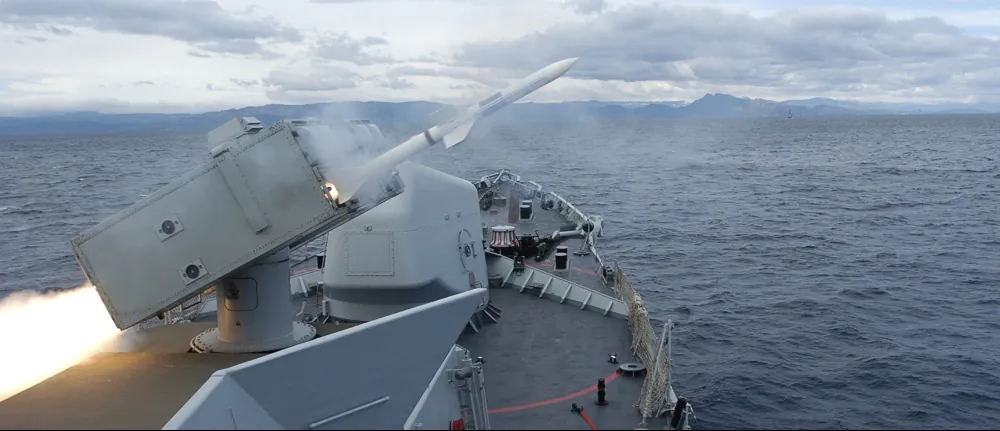
The operation of the systems begins with the detection of approaching targets by the RTN 30X monopulse tracking radar. The target information is then transmitted to the NA 30 integrated weapon control system. The system commands the RTN 12X CW illumination radar to illuminate the target and launch the missile. The Aspide homing missile receives the echo from the target in the front receiver and the direct illuminator signal from the RTN 12X in the rear receiver. The processing of the two signals produces a target Doppler, which is used to automatically track the speed and range to the target.
If the target emits a jamming signal to prevent the missile from echoing the target, the guidance system switches to passive jamming guidance mode. In this mode, the missile receives guidance information from the jamming signal emitted by the target, allowing it to successfully continue to intercept the target. If the transmitter is turned off, the missile switches back to semi-active homing mode.
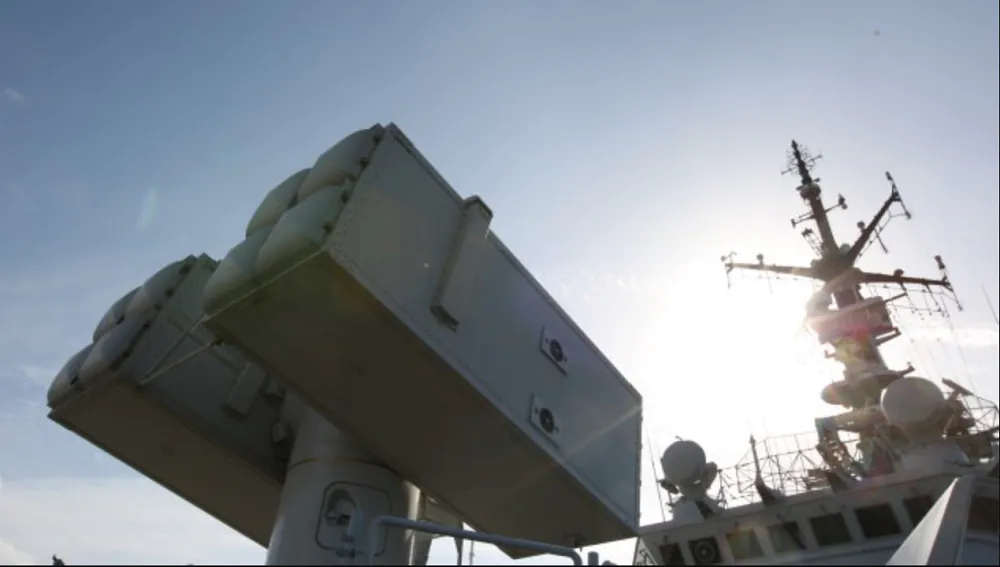
Selenia has built ten Albatros systems for the Italian Navy, all cruisers, destroyers and frigates have been fitted with the system during routine maintenance. The first two ships became operational with the weapon in 1976. Initially, the system used Sparrow missiles, but later the entire system was converted to Aspide missiles. The military realized that more powerful radars might be needed to take advantage of the Aspide’s increased range. Selenia was confident that their new missile would be effective against sea skimmers. Their hopes were fully realized.
Subsequently, the Peruvian Navy also ordered four Albatros systems, and then a second export contract was signed for four more such systems. The system was offered in two versions with single and dual channel fire control. The single-channel version, designed for ships up to corvette size, was offered at a price of $2.2 to $2.3 million, including the launcher and fire control system for missiles and up to three guns with two different ballistic characteristics, but excluding the missiles and guns themselves.
By 2022, the system has already been adopted in 16 countries on various classes of warships, from OPVs to destroyers and aircraft carriers, and has proven itself well. It is resistant to all weather conditions and extremely resistant to ECM, designed to counter aircraft, UAVs, helicopters, as well as maneuverable anti-ship missiles and dive-bombing missiles.
Read also: Switchblade: American kamikaze drones to protect Ukraine
Spada 2000
The third possible application of Aspide is the Spada point defense system developed for the Italian Air Force. Spada was originally based on the Sparrow, but this missile lacked range and effectiveness, so some modification of the Aspide missile was made to meet the requirements of Spada.
Subsequently, the Italian industry began to develop modifications of the Aspide for use on land and sea platforms. One of the results was the Spada Aspide surface-to-air missile system, also known as the Skyguard Aspide. It was developed jointly with the Swiss company Oerlikon Contraves, which provided its Skyguard fire control system and some other components. But there is also a more modern version of this system – Spada 2000.
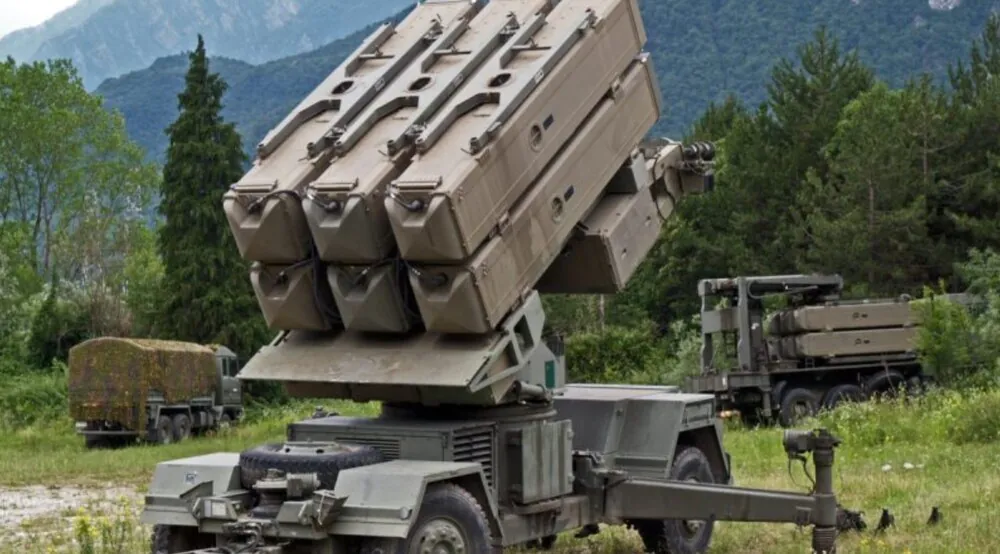
Let’s take a closer look at this powerful highly automated air defense system.
Spada 2000 is an all-weather, day and night, highly automated ground-based air defense system developed by MBDA (formerly Alenia Marconi Systems). The system has a fast response time and requires a small number of operators to control the system. The unit can operate independently or integrate with national air defense centers.
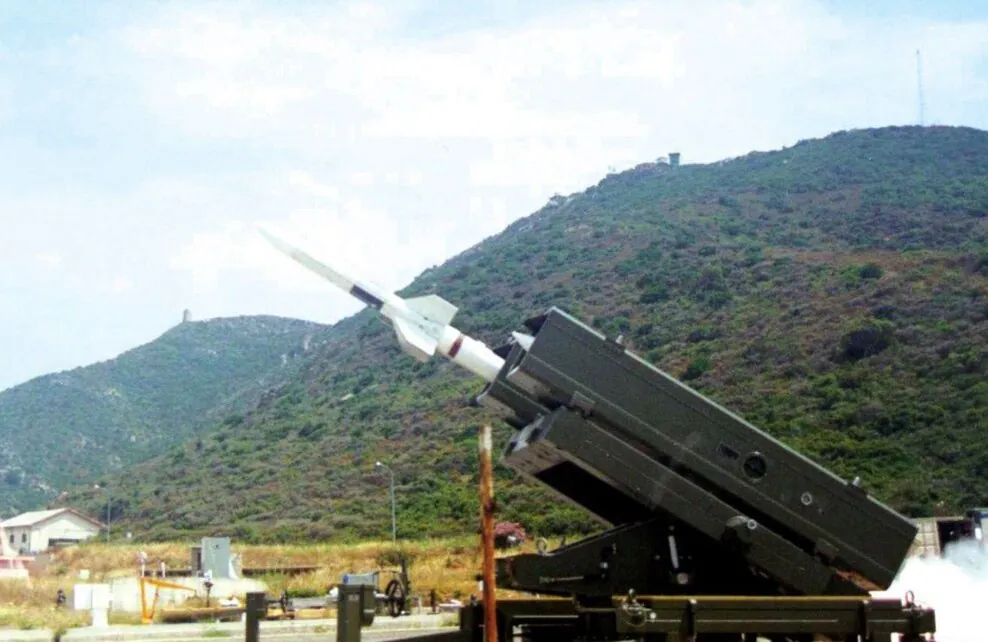
The Spada 2000 is an upgraded version of the air defense system that provides significant operational and technological improvements, including increased firepower and range, as well as the ability to coordinate with additional air defense weapons. In March 2007, Kuwait ordered an upgrade of its Aspide missile systems to the Aspide 2000 / Spada 2000 configuration.
The system provides missile air defense coverage of up to 2000 km². The range of detection and tracking of targets is up to 60 km, and missiles can intercept the intersection and approach to targets at a distance of up to 25 km. The probability of shooting down enemy missiles is very high, even against very fast maneuvering targets. The system can engage up to four targets simultaneously with Aspide missiles.
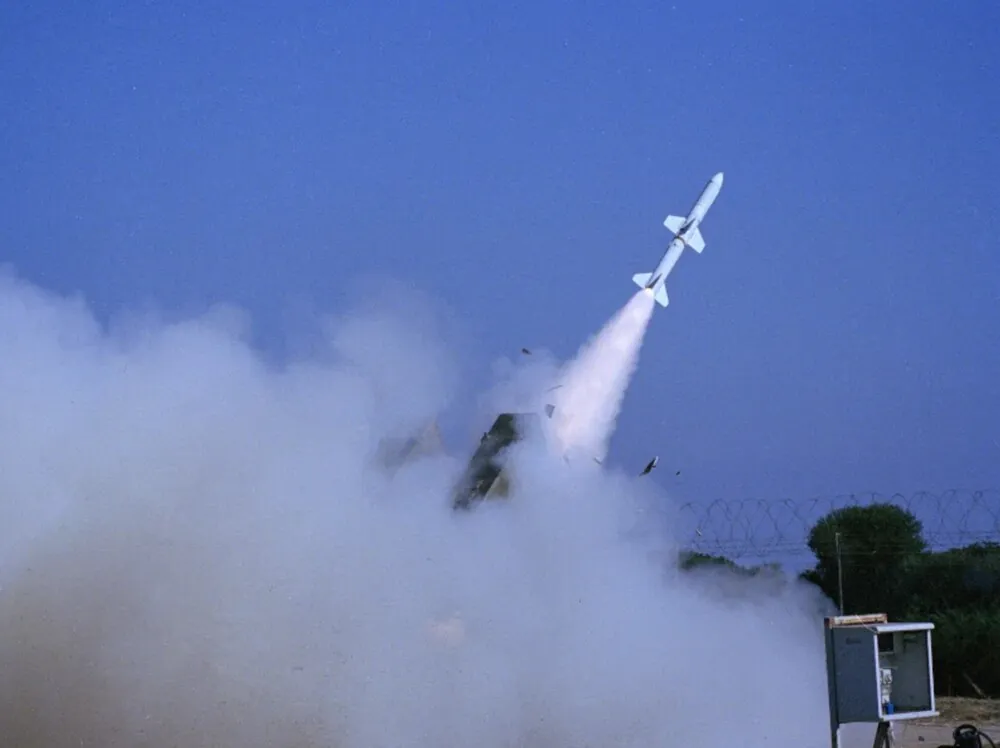
Spada 2000 has a modular structure and integrates into protected units, providing high tactical and strategic mobility.
The system consists of a detection center and two or four firing sections, each equipped with two launchers. Each missile launcher has six Aspide 2000 missiles ready to fire. We will describe them in more detail below.
Spada 2000 coordinates networked air defense assets such as very short-range air defense systems (V-SHORADS) and up to ten air defense artillery units deployed within a 10 km radius of the detection center.
The system can be easily transported by truck, train or fully compatible C-130 aircraft.
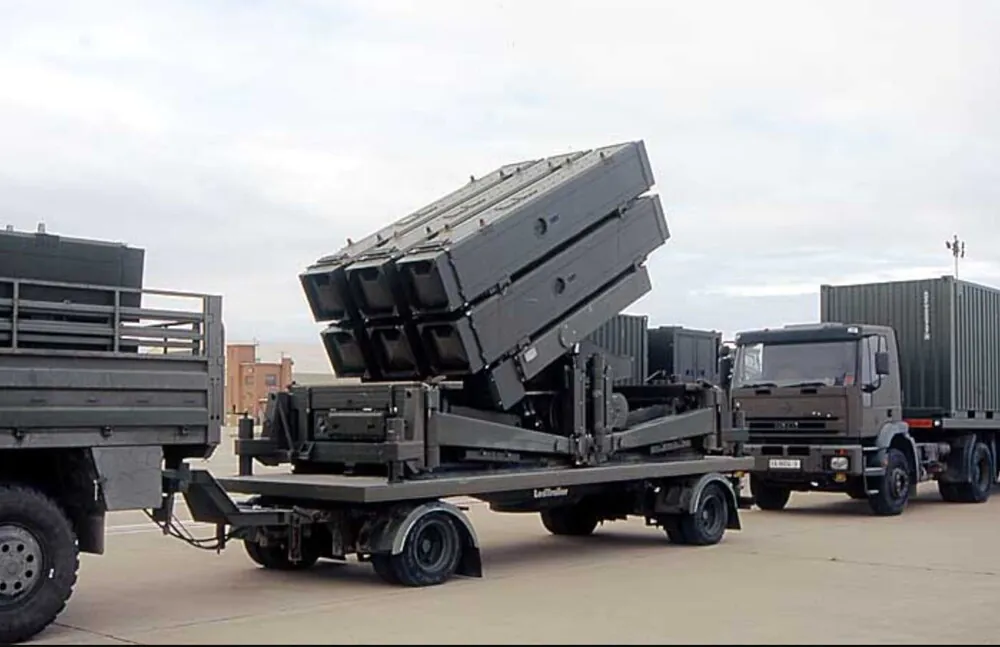
The detection center has a mission planning capability that allows for fast and accurate weapon deployment. The center is housed in a fortified shelter with a RAC-3D radar mounted on a hydraulically operated mast on the roof of the shelter. The shelter houses the system’s operations center, which includes voice and data communication packages. Auxiliary equipment includes a global positioning system, direction finder, air conditioning and power supply.
The Aspide 2000 radar is a Selex Sistemi Integrati (formerly Alenia Marconi Systems) RAC-3D, which provides three-dimensional volumetric airborne surveillance, detection and tracking. The system is capable of tracking 100 targets simultaneously at a distance of up to 60 km.
The radar is capable of operating in a hostile electronic warfare environment and is resistant to interference and electronic countermeasures. The radar has the functions of radiation control, obstacle location, random frequency maneuverability and coded waveforms. The sliding radar antenna has a height of up to 13 m.
The operations center is manned by two operators for task planning, system deployment and control during combat operations. A computer displays air threat data in 3D coordinates.
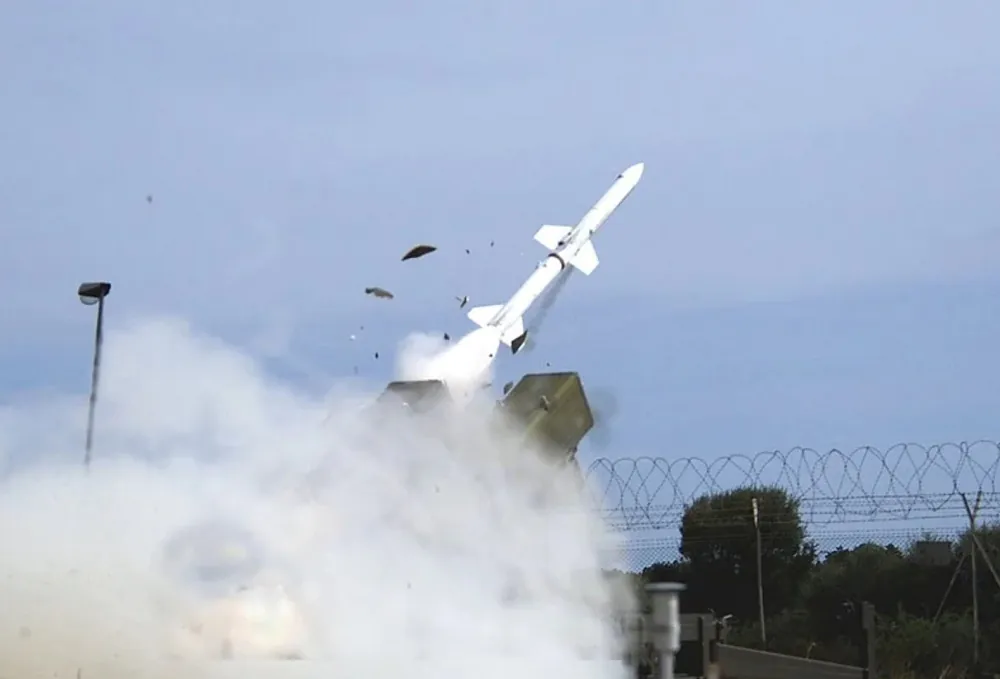
The system tracks, identifies and prioritizes targets, and assigns firing sections to priority targets. Targets can also be assigned to other air weapon systems. The system is capable of coordinating up to ten small air weapons deployed within a 10 km radius. The operational center can be connected to a remote air defense command center of the upper level.
The firing section consists of a tracking and illumination radar, a control unit and missile launchers with six missiles ready to fire. The radar performs the functions of capturing, tracking and illumination of the target for missile guidance.
The control unit is managed by one operator. The unit controls all functions from targeting to missile launch and target interception and can operate in manual or automatic mode.
The communication complex includes data transmission channels between the detection center and firing sections, as well as secure internal and external voice communication.
The basic configuration of the system includes:
- detection center for tactical operational control
- 2 firing sections (with the possibility of expansion to 4)
- 1 or 2 rocket launchers per firing section.
The system works in Spain and Italy. Perhaps, this system will come to Ukraine.
Read also: All about the General Atomics MQ-9 Reaper
Aspide 2000 (aka Aspide Mk II)
We specifically decided to talk about this modification of the missile. The Aspide 2000 is a powerful upgraded version of the Aspide multi-role missile for use in surface-to-air systems. Aspide 2000 was previously called Aspide Mk II. The system is also referred to as the Skyguard air defence gun and missile system.
The Aspide 2000 missile is 3.70 m long and 0.20 m in diameter. This 240 kg missile is capable of engaging an enemy attack aircraft before the aircraft can fire its on-board countermeasures. Aspide 2000 is also capable of intercepting air-launched missiles after launch.
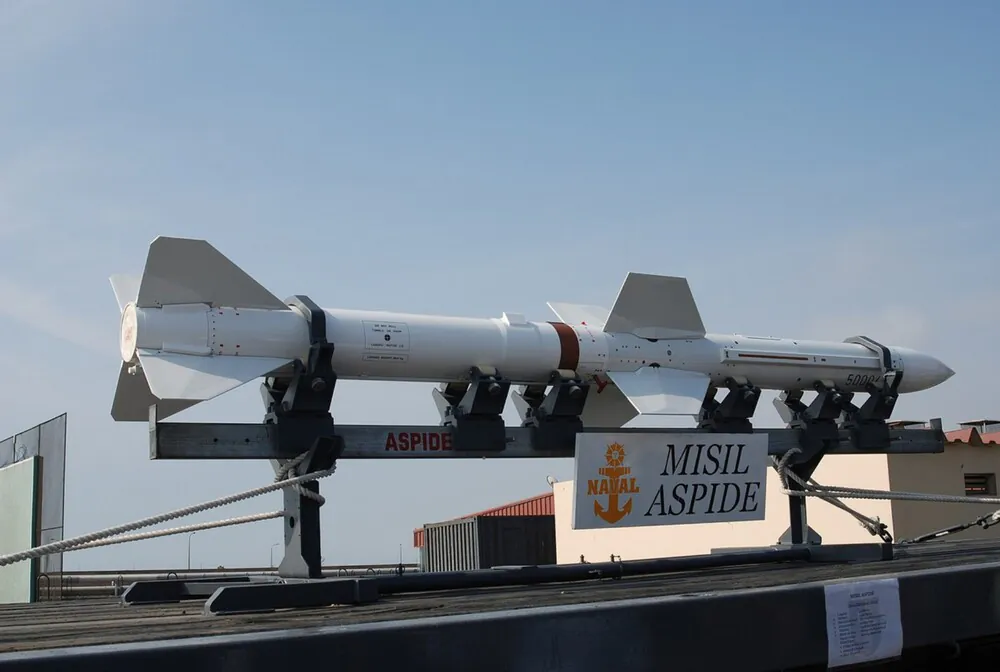
The upgraded missile uses an advanced single-stage rocket engine that provides increased missile speed, greater lateral acceleration and effective range.
The missile is in service with the Italian Air Force and the Royal Thai Air Force as part of the Oerlikon Contraves Skyguard air defense system.
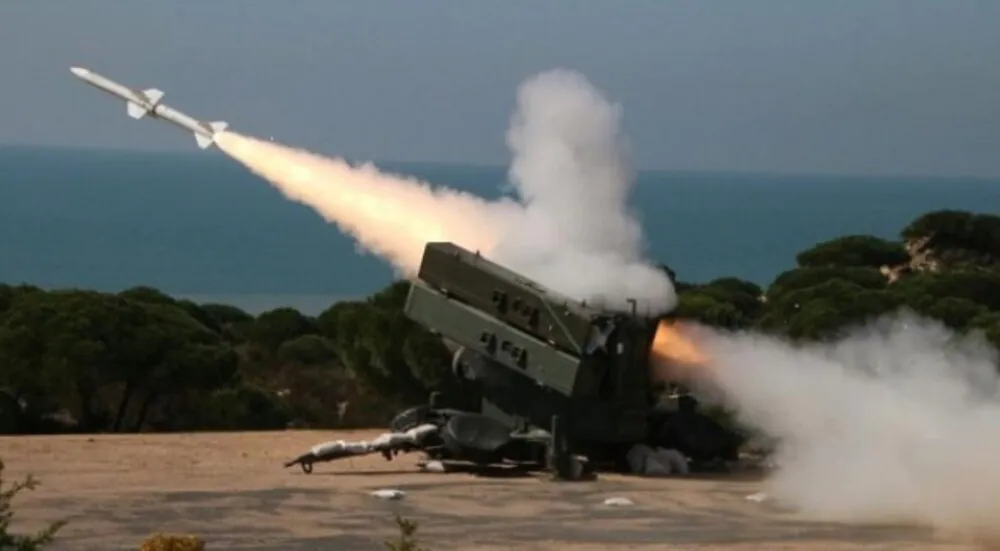
The performance has been further improved over time, enabling the missile to engage attacking aircraft before they can fire their on-board missiles. With its outstanding range capabilities, the system can provide a broad-based defense against all types of air threats. The Aspide 2000 missile is equipped with an advanced single-stage rocket engine to increase the missile’s speed, lateral acceleration and effective range by as much as 40% compared to the baseline Aspide missile. It contains all modern electronic features to improve navigation and performance in intense jamming and ECM environments. It is the single-stage, high thrust solid rocket engine that gives the missile supersonic speed and high maneuverability to intercept maneuvering targets. The guidance system is semi-active radar homing.
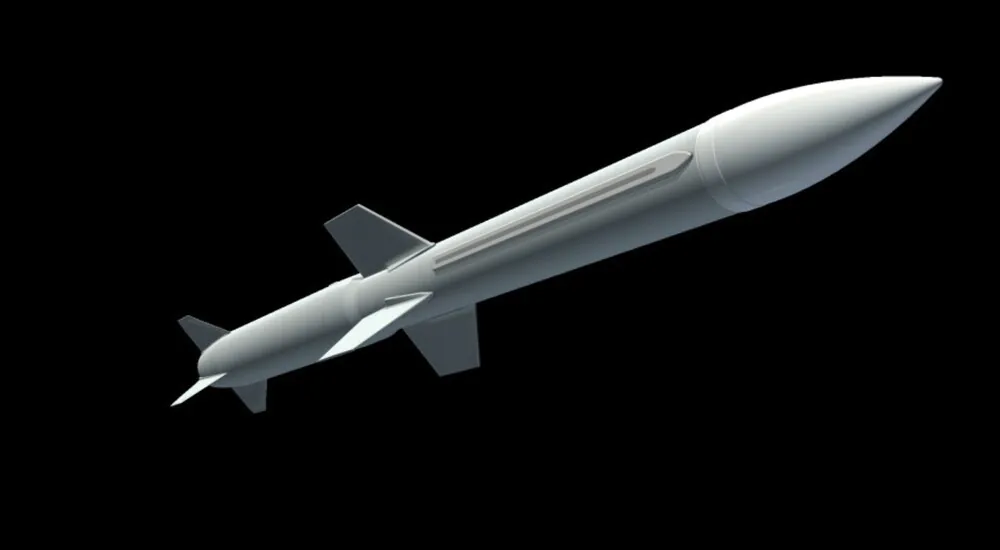
The Aspide 2000 missile is compatible with all systems currently using the Aspide baseline missile (Albatros/Aspide, Spada/Aspide and Skyguard/Aspide, AMOUN) by simply applying a second level of service system modification kit, fully reusing existing logistics support.
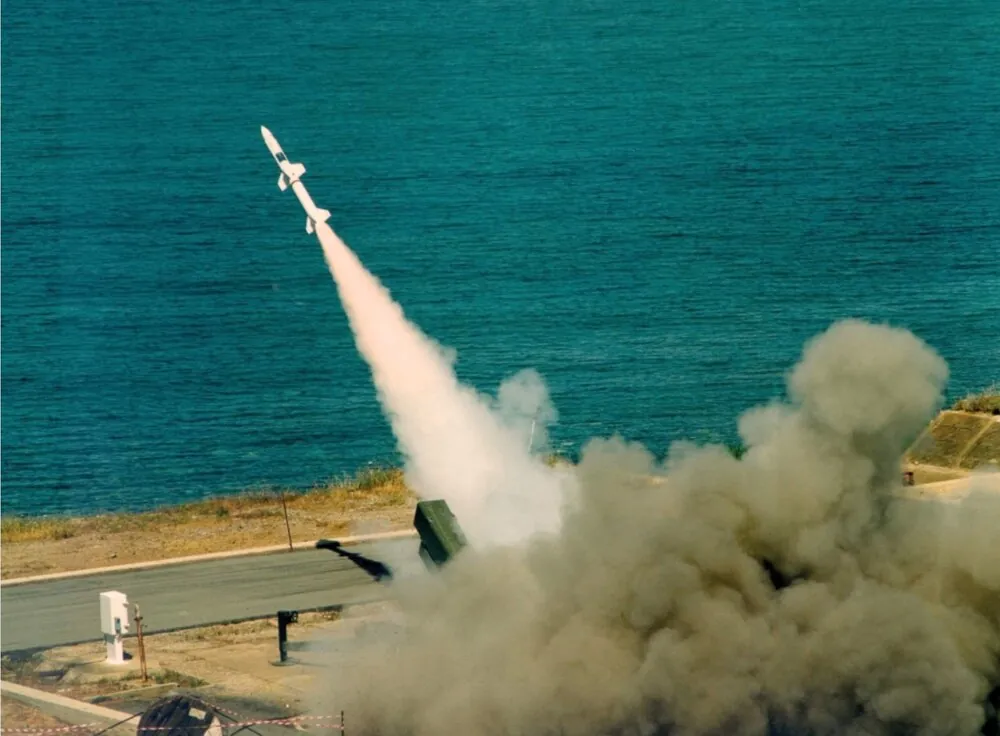
It is easy to understand that the Spada / Spada 2000 / Skyguard Aspide or Toledo in the current situation is of great interest to the Ukrainian army. Such equipment will not only partially replenish the losses of recent months, but also provide many real advantages. Any SAM that can help us shoot down missiles and drones will be valuable for us. Now we need to close the Ukrainian sky as much as possible and ensure the safety of our cities and villages. The reduction of Ukraine’s air defense resources and the fact that Russia is increasingly resorting to aerial bombardment and firing with cruise and ballistic missiles of the ground-to-ground, air-to-air, air-to-ground class forced Ukraine to request our Western partners to acquire such systems in order to fill the obvious gaps in the country’s air defense.
- Length: 3.7 m
- Diameter: 234 mm
- Speed: supersonic
- Range: more than 25 km
We believe in our defenders. The invaders will not escape from retribution. Glory to Ukraine! Death to the enemies! Glory to the Armed Forces!
Read also:
- Comparison of F-15 Eagle and F-16 Fighting Falcon fighters: pros and cons
- Silent killers of modern warfare: most dangerous military UAVs
You can also help Ukraine fight with Russian occupants via Savelife or via an official page of the National Bank of Ukraine.

